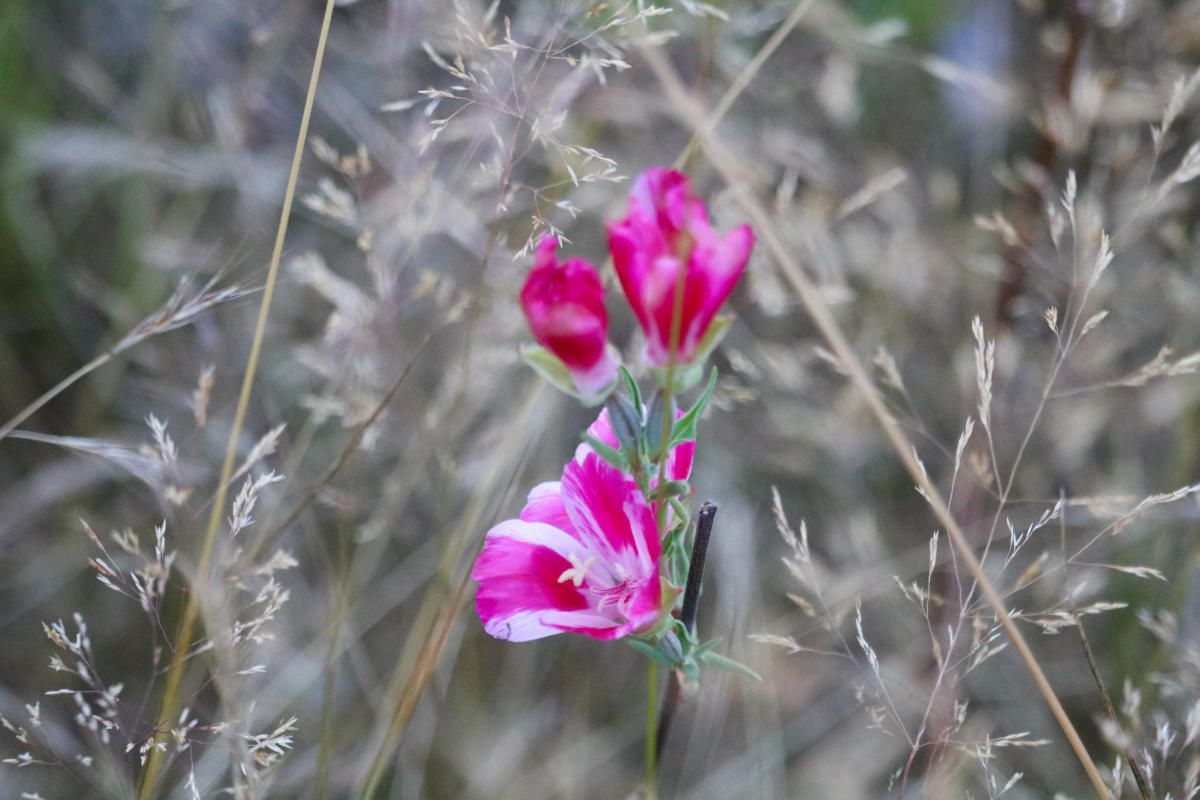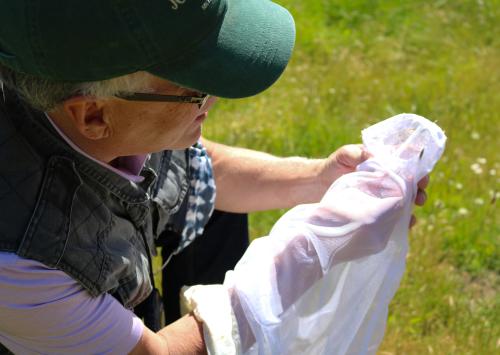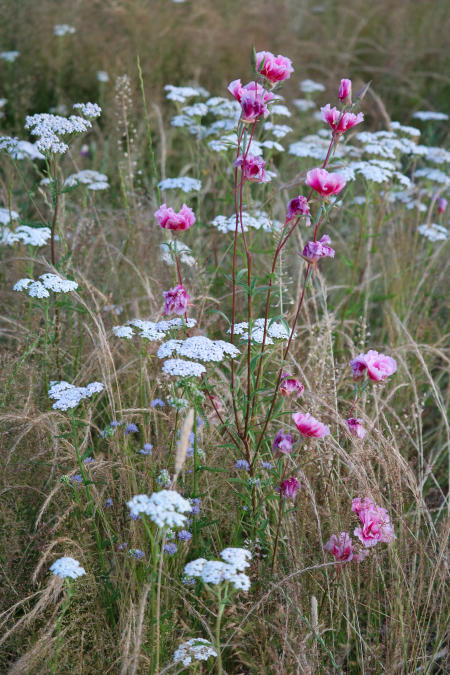 Most people try to keep their distance from bees, having developed an instinctive wariness after a painful sting or two. But Bellevue resident and citizen scientist Jim Maurer does the exact opposite. He not only seeks bees out on purpose, but actively pursues them in a quest for data.
Most people try to keep their distance from bees, having developed an instinctive wariness after a painful sting or two. But Bellevue resident and citizen scientist Jim Maurer does the exact opposite. He not only seeks bees out on purpose, but actively pursues them in a quest for data.
Jim is a volunteer researcher for the Pacific Northwest Bumble Bee Atlas, a collaborative project that works to track and conserve the bumble bees of Washington, Oregon and Idaho. The Atlas project is sponsored by the Xerces Society for Invertebrate Conservation, a science-based nonprofit dedicated to the conservation of invertebrates and their habitats. Xerces spearheads research through its community science program, which equips anyone with the tools and knowledge they need to collect and contribute meaningful data to support various conservation studies and efforts.
People just like Jim.
The project is currently focused on declining native bumble bee species, which made Juanita Bay Park a prime target for his research. Juanita Bay has been identified as a “Species of Greatest Conservation Need” (SGCN) zone, which means that several rare bumble bee species are thought to nest and forage in our park! Jim reached out to Parks & Community Services in June to get permission to conduct a survey, which Parks happily granted, as Juanita Bay is home to our new pollinator meadow.
At its core, the purpose of the research is to understand the cause of bumble bee declines so that conservationists can figure out how to save them. Bumble bees are vital pollinators, helping to sustain our natural environment and our food supply. Most people think of honey bees as our only food pollinators, but many crops, including tomatoes, peppers, blueberries, squash and others, are only pollinated by bumble bees.
Jim arrived at Juanita Bay in late June armed with the tools of his research, including an ice chest, several small glass vials, a camera, and most important, a net. We met him there, to learn more about the research and watch how it’s done. He conducted his survey in a portion of our 10-acre pollinator meadow, a large un-mowed area interspersed with smaller patches of densely populated native wildflowers. Not mowing helps preserve pollinator habitat and supports the growth of native species.

We’ve done two seasons of plantings so far, making it a great place to conduct a bee study.
As a volunteer, Jim is encouraged to travel beyond urban areas to search for declining bee species, but no matter where he is, his procedure for gathering them is pretty much the same. Once he locates a bee, he scoops it into his net using a rapid swooshing motion, or sometimes coming straight down from above. It can take a couple tries to collect the bee, as capturing the quick-flying furry little pollinators takes patience and diligence. Once netted, Jim uses a carefully honed technique to coax the bee, unharmed, from the net into one of the small glass vials.
 The bee is then placed on ice, which induces a state of torpor, similar to hibernation. After the bee is safely stowed in his ice chest, he notes the flower on which it was captured, and continues his survey. The surveys are timed, consisting of 45 minutes of bee tracking and netting, with the clock paused each time he adds a bee to a vial. Once the bee is safe and secured, he resumes timing.
The bee is then placed on ice, which induces a state of torpor, similar to hibernation. After the bee is safely stowed in his ice chest, he notes the flower on which it was captured, and continues his survey. The surveys are timed, consisting of 45 minutes of bee tracking and netting, with the clock paused each time he adds a bee to a vial. Once the bee is safe and secured, he resumes timing.
After the 45-minute survey is over, he photographs each bee from several angles, to help Atlas project biologists identify the sex and the species of the bees. After they’re photographed, the bees are set aside to warm up in the sun. Once warmed, they fly off and return to their busy pollinating lives.
He’s found, captured and released anywhere from 11 to over 24 bees during a single survey.
He then conducts a habitat survey, carefully photographing all the flowering plants in the search area. This is where his wife’s keen expertise in horticulture proves endlessly helpful, making it a team effort. Additionally, he looks for attributes conducive to nesting, like rodent holes and rock piles, and he identifies conditions that could adversely affect bee populations, including mowing and pesticide or herbicide use.
He also notes the weather conditions.
 The data is recorded on worksheets while he’s in the field. When he’s home, he enters all the collected data into an online database called BumbleBeeWatch.org. He plans to return to Juanita Bay in the next few weeks to do another survey and see what other bee species he might be able to discover.
The data is recorded on worksheets while he’s in the field. When he’s home, he enters all the collected data into an online database called BumbleBeeWatch.org. He plans to return to Juanita Bay in the next few weeks to do another survey and see what other bee species he might be able to discover.
Kirkland Parks is excited about incorporating more pollinator habitat into our parks system and is happy to keep most of our parks pesticide and herbicide free, to better support pollinating species. The City’s Integrated Pest Management (IPM) program ensures that 99% of our pest management efforts are physical and mechanical, with 1% that relies on herbicides. When used, herbicides are applied in an extremely limited and narrow scope to spot-treat noxious weeds.
A retired engineer, volunteering with the Atlas project is a perfect fit for Jim. It combines so many things that he loves, including research, data, photography, being outdoors and physical activity. Best of all it’s an intellectual project, which keeps his brain in great shape too.
He enjoys the mental challenge of the project.
“At home I spend time identifying the plants by their scientific names, and the species of each of the bees. The actual identification of the bee is done by a biologist with the Xerces Society when they review the data,” Jim said. “Although not required of the volunteers, it is interesting for me to learn to identify the bee, and it helps me take better photographs for the biologists. There are many subtle differences between species. It’s fun to see how many I get right.”
Thanks for doing this important work Jim! You’re welcome in Kirkland parks anytime!





